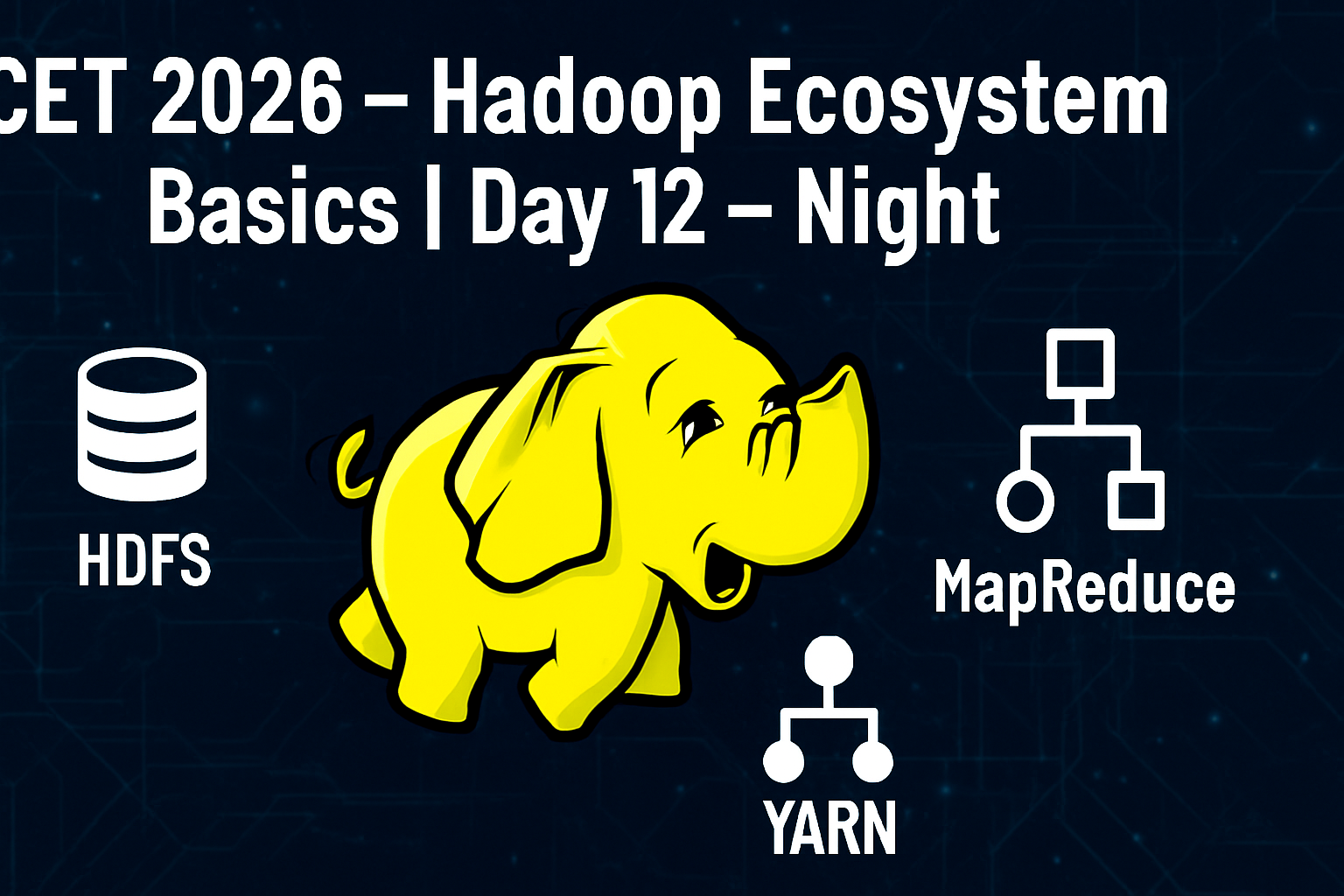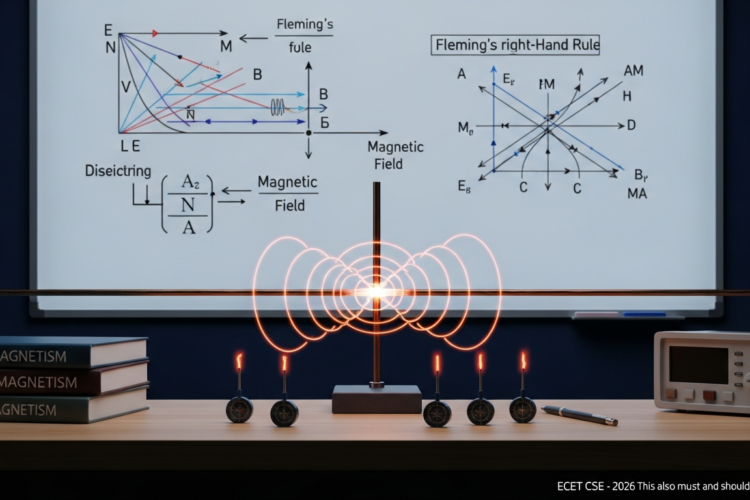
With the rise of data-driven applications, the ECET 2026 syllabus now includes Big Data and Hadoop under advanced computing concepts. While Hadoop may sound like a complex enterprise technology, the basics are easy to learn and very scoring in exams. Questions from this topic are often direct—definitions, components, and simple functions—making it a high-return chapter for CSE diploma students.
📘 Concept Notes – Big Data & Hadoop Ecosystem Basics
📊 What is Big Data?
- Big Data refers to extremely large datasets that are too big for traditional data processing systems.
- Defined by the 5 Vs:
- Volume – Massive data size.
- Velocity – Speed of data generation.
- Variety – Different data formats (structured, semi-structured, unstructured).
- Veracity – Accuracy and trustworthiness.
- Value – Extracting useful information.
🖥️ What is Hadoop?
- Hadoop is an open-source framework for storing and processing big data in a distributed environment.
- Developed by Apache Software Foundation.
- Uses commodity hardware to store/process data efficiently.
🔧 Hadoop Ecosystem – Core Components
- HDFS (Hadoop Distributed File System)
- Stores huge datasets by breaking them into blocks across multiple nodes.
- Ensures fault tolerance with replication.
- MapReduce
- Programming model for parallel data processing.
- Splits tasks into smaller sub-tasks (Map) and combines results (Reduce).
- YARN (Yet Another Resource Negotiator)
- Manages resources and job scheduling in Hadoop.
🌐 Hadoop Ecosystem – Supporting Tools
- Hive – SQL-like querying for big data.
- Pig – High-level scripting for data processing.
- HBase – NoSQL database for real-time read/write.
- Sqoop – Transfers data between Hadoop and relational databases.
- Flume – Collects and moves large log data.
- Oozie – Workflow scheduler for Hadoop jobs.
💡 Key Points for ECET
- Hadoop is designed for distributed computing.
- HDFS stores data; MapReduce processes it; YARN manages it.
- Commonly asked questions: “What are Hadoop’s core components?”, “What does YARN do?”
🔟 10 Most Expected MCQs – ECET 2026 [Hadoop Ecosystem Basics]
Q1. Which is a core component of Hadoop for storing data?
A) Hive
B) HDFS
C) Pig
D) Sqoop
Q2. YARN in Hadoop stands for:
A) Yet Another Resource Negotiator
B) Your Application Resource Network
C) Your Access Resource Node
D) Yearly Application Resource Notation
Q3. Which tool is used for SQL-like queries in Hadoop?
A) Pig
B) Hive
C) HDFS
D) Flume
Q4. Hadoop is mainly designed for:
A) Gaming
B) Distributed computing
C) Mobile apps
D) Graphics rendering
Q5. In Hadoop, data is stored in:
A) Tables
B) Blocks
C) Files only
D) Streams
Q6. Which Hadoop tool is used for moving log data?
A) Sqoop
B) Pig
C) Flume
D) Oozie
Q7. MapReduce is used for:
A) Data storage
B) Data transfer
C) Data processing
D) Data encryption
Q8. Which component of Hadoop ensures resource management?
A) Hive
B) Pig
C) YARN
D) Sqoop
Q9. Sqoop is used for:
A) Data compression
B) Transferring data between Hadoop and RDBMS
C) Data visualization
D) Managing logs
Q10. HBase in Hadoop is a:
A) SQL database
B) NoSQL database
C) File system
D) Query engine
✅ Answer Key Table
| Q.No | Answer |
|---|---|
| Q1 | B |
| Q2 | A |
| Q3 | B |
| Q4 | B |
| Q5 | B |
| Q6 | C |
| Q7 | C |
| Q8 | C |
| Q9 | B |
| Q10 | B |
🧠 Explanations of All Answers
- Q1 → B: HDFS stores large data across nodes in blocks.
- Q2 → A: YARN = Yet Another Resource Negotiator.
- Q3 → B: Hive allows SQL-like querying on Hadoop data.
- Q4 → B: Hadoop is built for distributed data processing.
- Q5 → B: Data in HDFS is stored as fixed-size blocks.
- Q6 → C: Flume is for large-scale log collection and transfer.
- Q7 → C: MapReduce processes big data in parallel.
- Q8 → C: YARN handles job scheduling and resource management.
- Q9 → B: Sqoop moves data between RDBMS and Hadoop.
- Q10 → B: HBase is a NoSQL database for large-scale data.
🎯 Why This Practice Matters for ECET 2026
Big Data and Hadoop questions are direct and factual, meaning they don’t require long calculations—just concept clarity. Practicing these MCQs ensures you can quickly answer high-confidence questions in the CSE technical section without wasting time.
📲 Join Our ECET Prep Community on Telegram
Get daily CSE MCQs, PDF notes, and ECET strategy tips:
👉 @LearnNewThingsHub



